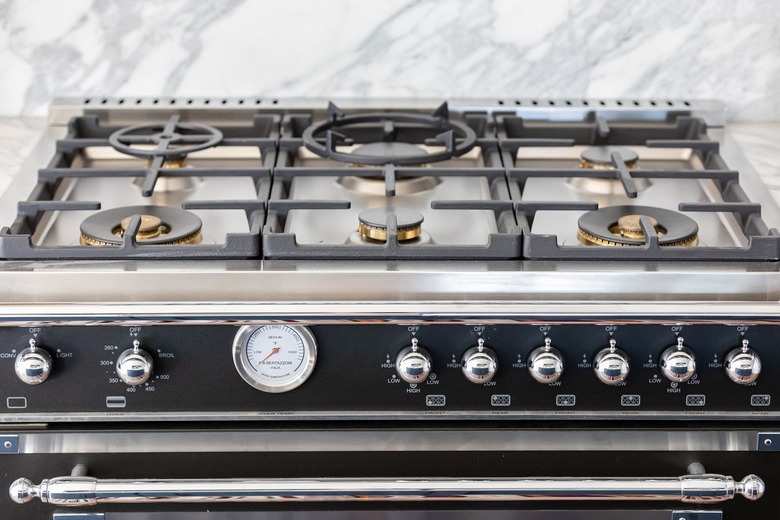What You Should Know About Storing Holiday Leftovers
We may receive a commission on purchases made from links.
The holiday season is all about the food — and that means lots of leftovers. But what are the best and safest practices for storing all of those leftovers to keep you and your family healthy, happy, and full this winter? We asked the experts to give us the 411 on leftover storage safety in preparation for our holiday feasts.
"After a memorable holiday meal, you don't want to be remembered for feeding family and friends lethal leftovers," Isabel Maples, a registered dietitian who's also a spokesperson for the Academy of Nutrition and Dietetics and a bariatric navigator at Fauquier Health, tells Hunker.
We couldn't agree more! Read on for some important holiday leftover intel from Isabel and fellow dietician Judy Barbe, a cooking teacher, recipe developer, speaker, and food blogger at LiveBest.info. (Barbe is also the former chair of the Academy of Nutrition and Dietetics Food and Culinary Professionals Practice Group, and the author of Your 6-Week Guide to LiveBest: Simple Solutions for Fresh Food and Well-Being.)
Here are some of their top tips to keep in mind during this festive season.
1. Plan ahead!
1. Plan ahead!
We all know that holiday food prep is important, but it's probably less common to think about prepping our workspace.
"Check your refrigerator temperature NOW, and make sure it's between 35 and 40 degrees," says Maples. "Clean out your refrigerator ahead of time. Wipe down the shelves and sides of your fridge with a disinfecting bleach solution."
2. Refrigerate food within two hours of serving.
2. Refrigerate food within two hours of serving.
Both Maples and Barbe tell us that getting perishable foods like deviled eggs, cheese platters, and pizza into the fridge soon after serving is a safe habit to get into.
"The general rule of thumb is to put it back in the fridge after two hours (or one hour if the temperature is above 90°F)," Barbe says. "So feed the guests and then get things back in the fridge before you tackle the dishes."
Maples offers that getting dishes refrigerated within this two-hour timeframe might take some planning when you're hosting, especially with a larger group. But there are many factors that make it an important step.
"Many foods, with their rich supply of nutrients and moist quality, offer the perfect environment for bacteria to grow," Barbe cautions. "Bacteria double every 20 minutes under the right conditions. Don't spur this by providing a warm temperature. A single bacterium can multiply to trillions in just 24 hours between 40°F and 140°F."
3. Food typically keeps for four days after cooking.
3. Food typically keeps for four days after cooking.
Both experts share that the lifespan of leftovers is usually between three and four days.
"If you haven't eaten them by then, freeze them," says Barbe. Maples adds that while some foods can be eaten up to four days later, certain dishes are more flavorful before then, such as turkey. Meanwhile, stuffing and gravy keep for only two days.
4. Wrap food tightly.
4. Wrap food tightly.
The way you store and wrap your leftovers is critical to keeping them as fresh as you can.
"The tighter the wrap and the more air you can get out, the better," says Barbe. "Roll a Ziploc bag to remove as much air as possible. Be sure to label the container." Certain foods are hard to tell apart when they're frozen, like chicken broth and lemon juice, for example.
5. Store leftovers in shallow, two-inch containers.
5. Store leftovers in shallow, two-inch containers.
Both experts suggest using two-inch storage containers for your leftovers. Dividing them into smaller portions helps prolong freshness.
6. Reheat leftovers to 165°F.
6. Reheat leftovers to 165°F.
Additionally, Barbe says that we should reheat sauces, soups, and gravies by bringing them to a "rolling boil." Leftovers should also be covered when reheating. "This retains moisture and ensures that food will heat all the way through," she says.
7. Download the USDA’s food storage app.
7. Download the USDA's food storage app.
Maples recommends downloading the USDA FoodKeeper app because "it provides food storage tips for over 600 foods." FoodKeeper is designed to help consumers eat foods at their peak quality, and reduce waste.
8. When in doubt, throw it out!
8. When in doubt, throw it out!
Maples insists on erring on the side of caution if you have any hesitation about the leftovers in your fridge. "Food safety can mean more than a tummy ache," she says.


